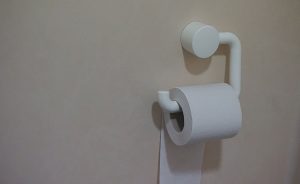Plungers are among the basic household equipment that each person ought to have in their home. But did you know that the term is not specific to these household items? In this article, we will talk about the different types of plungers and their applications.
These simple tools are very important when it comes to simple drains repair projects. They are very easy to use and are often the first remedy that people go for when the drainage system within the house is blocked. If used appropriately their application takes effect in a matter of seconds. Plungers can help you save a lot of money that could have been used on hiring a professional.
Plungers are fitted with two main components a rubber end which in most cases is in the shape of a cup and a handle. They work through the pressure and suction principle which is dependent on air pressure from the external environment. It is important to keep in mind that the cups fitted on some plungers may have different shapes.
In most cases, the shape of the rubber cup is what will determine which part of the house the plunger will be used. Here is a highlight of different types of plungers and how to use them.
Sink Plunger
The sink plunger is the most common type of plunger that nearly everyone has in their home. Like the name suggests this type of plunger is highly effective on blocked kitchen sinks. This is made possible due to their limitless suction force that is created when the rubber cup is pressed against a flat surface.
Using this plunger is very easy all you have to do is to ensure that the rubber head is placed at such an angle that if you press it against the drainage opening there will be no space for air to escape. This will create a vacuum inside the cup and at the same time building pressure on the outward surface of the cup.
After the cup has been pressed and enough suction force is created, simply pull back the handle without disengaging the cup from the surface. Repeat this continuously until you see the water flowing freely into the drainage opening. Apart from being used on kitchen sinks, this plunger can also be used to unclog bathtubs and shower drainage systems provided there is a flat surface.

Accordion Plunger
This category of plungers is very good when it comes to dealing with toilet clogs. Their design makes them a very powerful tool when applied onto toilet bowls. They have a part that looks like a pressure chamber where all the action takes place. The cup fitted on accordion plungers is smaller compared to that on sink plungers.
The material from which they are made is also strong and very elastic creating a powerful amount of suction force that is needed in clearing toilet clogs. The blockage material will go through a shockwave adventure created by the suction force, if you will. The idea behind this unique look is that the small cup end is what goes inside the toilet bowl. When the cup has been fully inserted inside the toilet press on the handle to create pressure that will result in a suction force.
Flange Plunger
Commonly known as the toilet plunger the flange plunger is also another type of plunger that has a unique design. Unlike the previously mentioned plungers, this type of plungers has two cups. The larger cup is identical to that on sink plungers but the smaller cup is almost the same as that on accordion plungers. In a nutshell, the flange plunger is something close to a perfect blend between the sink plunger and the accordion plunger.
This combination is what makes the flange plunger to be diverse. It can be used on a variety of drainage openings provided that the rubber cup fits the drainage opening. It is not exclusively limited to toilets. Like any other plunger using this plunger just involves creating the right suction force against the clog. This versatility is what makes it so popular; having being used in various establishments imaginable such as this adventure park in Victoria.
In the Engineering World: Spring Plungers
In the engineering world, a plunger is not what you would think at all. A spring plunger, also called a spring-loaded device (SLD), is a small and narrow device that’s used for positioning and indexing of different elements. Once installed, it applies sufficient pressure so the ball or nose remains positioned. To learn more about spring plungers and the way they’re used, keep reading.
The spring plunger lives up to its namesake by using”spring force” to use pressure. This allows the ball (found in the end) to stay positioned at all times, regardless of how much pressure is exerted onto it. Spring plungers may be installed in several different ways, a few of which comprise hex sockets, standard, heavy force and much more. It is also used in various sub-branches of engineering; from mechanical to civil engineering.
The 3 Pieces of a Spring Plungers
Spring plungers are available in dozens of different sizes and kinds, each of which has its own intent. Most, however, features just three basic components: the plunger, inner compression spring, and threaded body. The threaded body is the housing component that encapsulates the spring, while the plunger rests on the exact tip/end, allowing for an accurate force to be exerted. It is a relatively simple design that proves particularly helpful in manufacturing applications.
Benefits of Using Spring Plungers
There are several advantages associated with using spring plungers, one of which is its simplicity. When compared to normal, non-loaded springs, spring plungers are typically easier to install. What’s more, they allow for accurate and repeatable powers to be exerted — something that’s difficult to attain using springs.
Given their utility in the production business, you may assume spring plungers are expensive. But they’re actually cheap, which makes them a superb alternative for budget-conscious small business owners, construction contractors and end consumers.
Things to think about when Choosing Spring Plungers:
- What material is it made from? Stainless steel is a great choice, as it provides natural protection from corrosion and rust.
- Are they coated? Even when the actual spring plunger is constructed of stainless steel, then it might feature some other exterior coating for extra protection.
- What’s the installation process? Again, you might find that different spring plungers have different installation methods such as hex socket, slotted driveway, and high slot for blind holes.
- What size is it? Frequent sizes for spring plungers include .35 inch to 1.75 inch.
- How much stress does this need to exert? That is pretty self-explanatory, since you need to ascertain how much pressure the spring plunger needs to exert.



